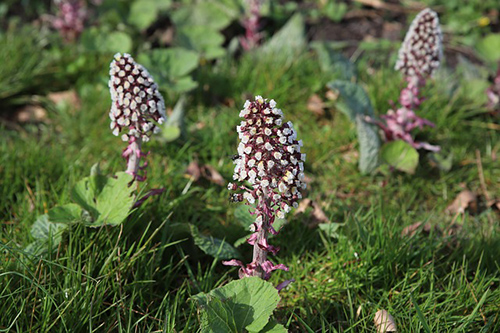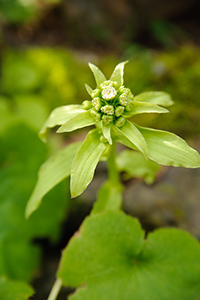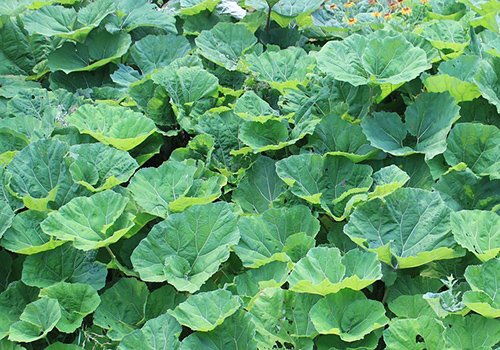Contents
The butterbur plant is also known as significant coltsfoot due to the similar appearance of this plant to that of true coltsfoot, which is sometimes also called butterbur. Both plants have similar properties. Butterbur has been used in central Europe since the Middle Ages, though coltsfoot is preferred because it has a better flavor.

Healing Properties and Warning
The rhizome and the leaves of butterbur contain inulin, pectin, and mucilage, which give the plant its expectorant and emollient properties; glycosides and essential oil with antispasmodic, diuretic, sudorific, and emmenagogue properties; and tannin and resins, to which the plant owes its vulnerary properties. These are the principal applications of butterbur:
- Respiratory disorders: Its antispasmodic properties effectively prevent acute crises in bronchial asthma. It is also an antitussive and expectorant for bronchitis and bronchial pneumonia.
- Throat disorders: Butterbur is recommended for laryngitis, aphonia, and tracheitis.
- Anti-inflammatory: In external use, fresh butterbur leaves directly applied or mashed in poultices are recommended for phlebitis (inflammation of the veins), furuncles, and adenopathy (inflamed glands).

Warning! Butterbur contains variable amounts of alkaloids that may be toxic to the liver. Due to this, the German Commission E for Human Medicine phytotherapy section does not recommend its use, although it does not ban it.
Butterbur Plant Scientific Facts

- Other names: Major Coltsfoot.
- French: Petasite hybride.
- Spanish: Sombrerera.
- Environment: Wet soils and banks of rivers and brooks in warm and cold regions of Europe.
- Description: Vivacious plant of the Compositae family, growing up to 50 cm high. In the early Spring, some flower stems grow from the underground rhizome, with pink or violet flower heads. Its large, petioled leaves grow later.
- Parts of the plant used medicinally: The rhizome and the leaves.
How to use Butterbur
- Infusion with 20-30 g of leaves and/or rhizome per liter of water, drinking from three to five cups daily.
- Poultices with fresh mashed leaves.
DISCLAIMER: All content on this website is presented solely for educational and informational objectives. Do not rely on the information provided as a replacement for advice, diagnosis, or treatment from a qualified medical expert. If you are pregnant, nursing, or have any preexisting medical concerns, talk to your doctor before using any herbal or natural medicines.
REFERENCES
- George D. Pamplona-Roger, M.D. “Encyclopedia of Medicinal Plants.” George D. Pamplona-Roger, M.D. Encyclopedia of Medicinal Plants. Ed. Francesc X. Gelabert. Vols. 1 San Fernando de Henares: Editorial Safeliz, 2000. 320. Print. [butterbur plant]
- Mayo Clinic: https://www.webmd.com/vitamins/ai/ingredientmono-649/butterbur
- National Center for Complementary & Integrative Health (NCCIH): https://www.nccih.nih.gov/health/butterbur
- Memorial Sloan Kettering Cancer Center: https://www.mskcc.org/cancer-care/integrative-medicine/herbs/butterbur
- Verywell Health: https://www.verywellhealth.com/is-butterbur-safe-for-migraines-1719847
